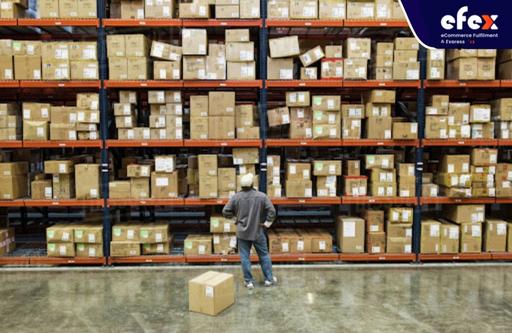
More Helpful Content
Material handling at a factory or warehouse includes moving, loading, emptying, pushing, pulling, storing, lifting, picking, putting, and retrieving things or goods. It has been an essential component of global supply networks and industrial processes.
On the other side, globalization has raised the demand for modern material handling devices and facilities. Manufacturers and suppliers are implementing innovative solutions to eliminate excess inventory, reduce worker injuries, boost productivity, and shorten delivery time.
Unfortunately, the material handling cost can be a huge amount of money for businesses. Despite they will assist you in saving money in the future, automated lifting or handling material systems frequently result in increased charges, necessitating a cost-benefit analysis before making a large purchase.

Material Handling Cost, which has other names such as Material Related Cost or MRC, is the expense of transporting your things from one site to another, for example, a truck to the warehouse and show hall, as well as the cost of holding your products until you utilize them. It also includes insurance and customs clearance charges, among other things. This is a fee levied by the show’s producers. Material handling costs, however, are non-negotiable.
It all simply refers to a few elements.
First and foremost, the weight of your packages is an important consideration. Your product’s weight is determined in CWT, which is an abbreviation for hundredweight. That implies your package is measured in 100-pound increments. Sadly, this may result in significant material handling expenses.
Secondly, when you deliver your things in many boxes, the weight element is double. You will be charged less if you keep your weight low and packed together. Show contractors might also charge more for container ships that are not typical sizes. Evaluate the exhibitor kit again to ensure the standard package are correct. It is also a good idea to ask your show provider if they use conventional box sizes for your stuff. A minor variation might cause a container to become enormous, potentially blowing your budget.
- Read More: Order Management System: Definition, Process And Value
- Read More: Order management system for Ecommerce: Definition, Key Effect, Benefit

Finally, there are late fines. Knowing your deadlines is essential for cost-cutting. If you have not already, each trade show should be documented in a spreadsheet, calendar, or document. We recognize that visiting one or many trades shows each year can be exhausting. That is why being organized is essential. Once you obtain your vendor contract, it is critical that you remember your deadlines in order to avoid late fees.
Many of us are unaware of the magnitude of all the hidden material handling costs. These expenditures are continually accumulating in a variety of sectors. To properly reduce these expenditures, you must first know where to look. Here is a list of 10 material handling costs to look for cost-cutting opportunities.
A complete line of equipment is shut down owing to faulty systems, costing you more money and time in the long term.
The cost of machine breakdown is determined by the amount of productivity lost. When a machine is slowed or halted due to insufficient material movement, the cost must be attributed to material handling.

In warehouse management, we all know that space is money. There are several system strategies and designs that may be used to effectively use space. Utilizing empty overhead space is one example.
It costs money every time an object is touched. Methods for minimizing the number of times an object is handled should be developed in order to lower your material handling costs.
Breakage is typically a high-cost component at worst. Improper approaches and types of equipment can significantly raise this cost.
Inventories that consume money and necessitate big storage facilities will require more money. Typically, the lower the inventory space needed, the more effective the system.

Maintenance expenses are important for two reasons: the time and materials needed for remedial action and the loss of production time for the requirement. Bad application or usage of equipment is a big element in raising the price of your system.
Aren’t productive employees paid to produce? As a result, every minute spent processing material is a minute wasted on productive work and budget.
Extra expenses are imposed once transportation facilities are left idle beyond set limits. Effective material handling may significantly reduce material handling expenses.

Material handling systems are not cheap at all. This is self-evident, yet, equipment should always be chosen with functionality and productivity in mind.
The key to lowering material-handling expenses in any firm is to place the proper material where, when, and how it is needed. These expenses can be reduced by lowering the number of times personnel contact the item, shortening the time and distance it travels, reducing equipment expenditures, avoiding damage, and increasing storage capacity. Controlling material-handling costs, in the end, boosts productivity and profits.

Decrease the frequency a worker is needed to touch material to maximize employee revenue and performance. Production generates value, not material handling. Each minute spent transporting, organizing, preparing, or storing materials is a minute wasted in production. By providing as many supplies as possible straight to the manufacturing floor, material handling may be eliminated considerably.

For instance, vendor-managed inventory can remove the requirement for products to be received, inspected, sorted, or stored.
When materials are processed, this journey must be as short as possible. Time spent transferring materials into and out of various manufacturing floor processes is time not spent producing. Create a direct path for materials from inventory receipt to kitting, assembly, testing, and shipment with little or no backtracking. This can significantly save production time while increasing earnings.
Material damage means revenue lost. Suitable storage techniques, such as tracking shelf life, temperature, and humidity levels, may help guarantee that items are useable. Documenting acceptable handling methods to minimize breakage, providing suitable handling equipment and tool, and ongoing staff training all help to reduce damage.

Because real estate is expensive to purchase and maintain, every centimeter of storage space should be utilized to its full potential. Supplying a warehouse should appropriately fill a cube from side to side and top to bottom. When adding an extra room, all accessible horizontal and vertical space should be utilized and ordered. This provides the most value per single centimeter for every dollar spent on warehousing expenditures.
Material-handling expenses can be lowered by installing the appropriate equipment at the appropriate locations. Construct gravitational conveyors, chutes, and slide lines prior to adding power-driven equipment to take full benefits of gravity-fed movement. Utilizing capital assets like a forklift in conjunction with substitutes like pallet jacks should be evaluated to see whether less costly equipment can fulfill the essential functions.
Before purchasing any machinery, its return on investment should be calculated. This will assist a business in determining when the equipment will pay for itself by lowering material-handling costs.
👉 Read More: What Is The Procurement Cycle? Process And Example
There are seven frequently main elements to determine the cost of a material handling system.

Service charges for local, national, and international couriers for acquiring and transporting both raw materials and completed items are included in shipping expenses. Based on your delivery destination, you may be required to pay exports and imports fees for international shipment. Outbound shipping expenses may be excluded because they are paid by the consumer.
Packaging costs are typically added to the original total shipping fees. But you may have to pay an additional fee for specialist packing. You must also consider packing material prices as well as labor expenditures.

The labor needed to transfer the cargo well within the facility is frequently included in handling charges. Regarding automation, manual labor will be used in the storage facility, assembly line, and workspaces. Consider these overhead costs when estimating the full system cost,
Storage expenses include fees for warehouse infrastructures. You will also need to include warehouse personnel pay if you have not previously factored them into your total handling expenses.
You must pay one-time setup fees when installing a new system and you will also have to pay for the training of your new employees.

You will be charged a monthly subscription price for services like electricity and water, regardless of working on the assembly line or in a warehouse. You will also have to purchase gasoline for your trucks and other vehicles. The price varies depending on your demand. For example, cold storage will demand more power for temperature management than its typical equivalent.

You will need to budget for preventative maintenance and the consequent downtime. You may also need to budget for unplanned maintenance and interruption. These expenses must also be factored into your ROI calculations.
Material handling costs are an important factor in calculating a manufacturing company’s profit. If these are disregarded while assessing manufacturing costs, the company’s potential profit will be overestimated. Analyzing material handling costs also enables the organization to consider future cost-cutting actions. Costs vary by industry and area, so your estimates must be adjusted accordingly.
Begin by calculating the expenses of shipping and packing your items. Add service expenses from any couriers and their subcontractors that your firm used. You may be able to remove outbound shipping based on the selling terms. These expenses are frequently passed on to the client or store.

Material handling charges should include warehouse and other storage fees. If your goods must be refrigerated, ensure that your assessment includes the expense of cold storage. It also contains the wages of any internal workers who process or ship supplies.

If your organization sends many products at once, you may need to divide your handling charges among them to get an exact assessment of each product’s actual cost. Based on your planning and budgeting requirements, you may allocate the expenses to a whole batch or compute per-unit pricing.
👉 Read More: What Is Activity-Based Costing? Example And Formula
The answer to lowering material handling costs in any firm is to place the proper material where, when, and how it is necessary. These expenses can be reduced by lowering the number of times personnel contact the item, shortening the time and distance it travels, decreasing equipment expenditures, avoiding damage, and increasing storage capacity. Controlling material handling fees, in the end, boosts productivity and profits. Hope you have a good time with Efex.
>> Explore more our End-to-End Order Fulfillment Solution


